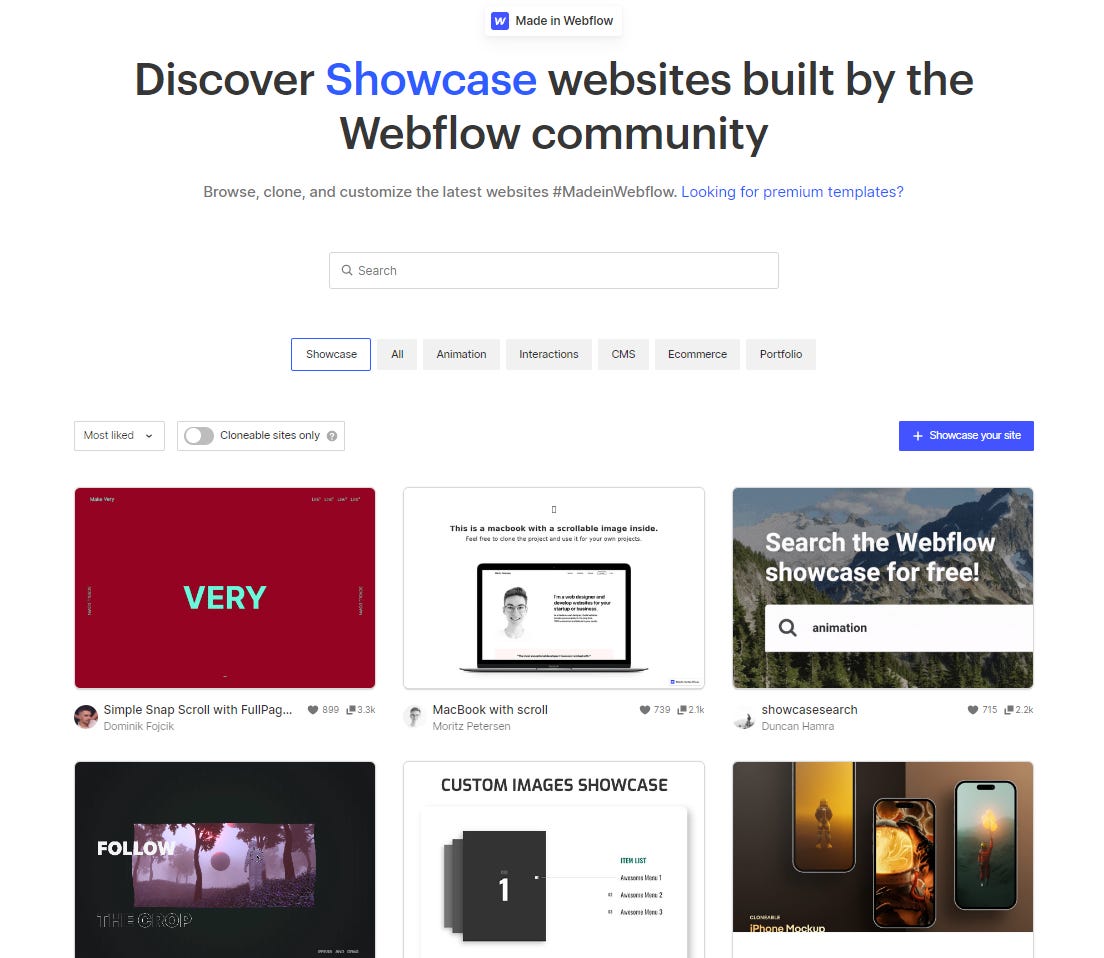Your guide to growth marketing & PLG
Webflow’s Bruno Estrella on the journey from seed to Series C
Webflow, the web design and hosting platform, has quickly become one of today’s most iconic PLG brands. The company joined the $100 million ARR club last year and has been on the bleeding edge of PLG trends such as:
Building a vibrant community around the product
Curating templates and user-generated content to attract new users
Pairing self-service with sales assistance (as Co-Founder Bryant Chou described in an earlier Growth Unhinged newsletter)
But the Webflow we know today isn’t the Webflow of only four years ago. As of early 2019, the business had been operating under-the-radar for seven years. Apart from a small $2.4 million seed round, Webflow bootstrapped to $10 million ARR and had roughly 60 employees at the time.
Bruno Estrella, Webflow’s head of growth marketing, joined in those scrappy early days. He was initially brought in as a growth marketer where he wore many hats like validating paid channels, scaling SEO efforts, setting up a B2B sales motion for the enterprise product, and scaling programs like Webflow for Education.
Bruno just hit his four year mark with Webflow. The company is now 10x the size (600+ employees) and has raised more than $300 million in funding. Bruno and I chatted about the role of growth marketing in a PLG startup and his lessons learned navigating hypergrowth.
On what it means to be the first growth marketer at a startup
I was brought in as a growth marketer, but in such an early stage you need to wear so many hats and that was my case.
I was brought in to validate new channels and build a system to scale them after validation. Because of that, I was able to touch different areas and bring them from 0 to 1. From there I would build a system to bring them from 1 to 10, and hire great people to bring it from 1 to 100.
I was involved in trying to validate paid advertising, build a B2B sales motion with the enterprise product, and build systems to scale programs like Webflow for Education (the student audience).
As the first growth marketer, you need to be comfortable with having a lot of problems to solve and identifying which you think are the biggest, then doubling down on those. A lot of times you don’t have the right skillset and so you need to adapt and learn how to approach the problem. That’s one of the key things that makes an early stage growth marketer successful.
Before you start to test channels, take advantage of having much access to the business itself including execs, initial data, and so on. Understand the business model of the company, how it has been growing from a unit economics perspective, and which channels you can leverage.
Even today, there’s always a conversation about a new channel coming up or a new tactic, but most of the time this channel doesn’t line up with your business model or you can’t find your audience there. Understanding the business itself is the foundation before you start to validate these channels.
For B2B PLG products, it’s hard to find paid channels that work and that have traction. Many of the scalable paid channels are on mobile. But there’s a high friction level from getting from mobile into a desktop software product.
For us, we are looking at channels that have high intent and also strong attention. With that in mind, we started with paid search and SEO, including editorial SEO and programmatic SEO. Whenever you can match user-generated content with SEO for your product, that’s a really strong channel for a PLG product. That’s what we tapped into with Webflow Showcase and the Template marketplace.
On the role of growth marketing in a PLG company
Keep reading with a 7-day free trial
Subscribe to Kyle Poyar’s Growth Unhinged to keep reading this post and get 7 days of free access to the full post archives.




